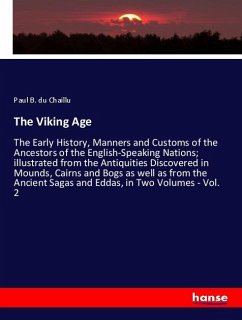
Viking Expansion
Versandkostenfrei!
Versandfertig in 6-10 Tagen
32,99 €
inkl. MwSt.

PAYBACK Punkte
16 °P sammeln!
High Quality Content by WIKIPEDIA articles! The Vikings sailed most of the North Atlantic, reaching south to North Africa and east to Russia, Constantinople and the Middle East, as looters, traders, colonists, and mercenaries. Vikings under Leif Eriksson, heir to Erik the Red, reached North America, and set up a short-lived settlement in present-day L'Anse aux Meadows, Newfoundland and Labrador, Canada. The motives driving the Viking expansion form a topic of much debate in Nordic history. One common theory posits that the Viking population had outgrown agricultural potential of their Scandina...
High Quality Content by WIKIPEDIA articles! The Vikings sailed most of the North Atlantic, reaching south to North Africa and east to Russia, Constantinople and the Middle East, as looters, traders, colonists, and mercenaries. Vikings under Leif Eriksson, heir to Erik the Red, reached North America, and set up a short-lived settlement in present-day L'Anse aux Meadows, Newfoundland and Labrador, Canada. The motives driving the Viking expansion form a topic of much debate in Nordic history. One common theory posits that the Viking population had outgrown agricultural potential of their Scandinavian homeland.[citation needed] For a coastal population with superior naval technologies, it made sense to expand overseas in the face of a youth bulge effect. However, this theory does little to explain why the expansion went overseas rather than into the vast, uncultivated forest areas on the interior of the Scandinavian Peninsula. Moreover, no such rise in population or decline in agricultural production has been definitively proven. These shortcomings are addressed by the hypothesis that the expansion was caused by a shortage of women, with the intention to acquire wives.












